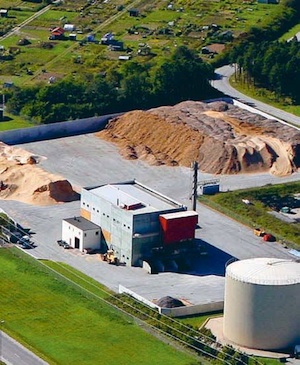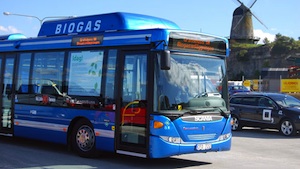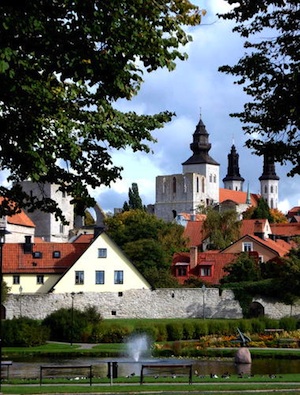Bio-fuelled district heating
A former Viking site on the island of Gotland, Visby was the main centre of the Hanseatic League in the Baltic from the 12th to the 14th century. Its 13th-century ramparts and more than 200 warehouses and wealthy merchants’ dwellings from the same period make it the best-preserved fortified commercial city in northern Europe.
As an element in the preservation of Visby’s buildings, construction of a district heating network began some 30 years ago. Now, all heat in Visby’s district heating system is produced using a mix of renewable energies.
Visby’s district heating project is not an isolated case on an island where the use of renewable is guaranteed. Gotland is a showcase for a number of interesting and innovative renewable energy initiatives. This is not really surprising. Gotland has Sweden’s highest sunshine figures, enjoys good access to biofuels and is one of the best European locations for wind power. These natural assets, the entrepreneurship of the islanders and the municipality’s focus on strategic environmental planning have led to the realisation of many ideas for increasing the sustainability of Gotland’s local energy supply.
Biofuel in Visby’s district heating
The World Heritage City of Visby consists of many unique buildings and mediaeval ruins that are built from limestone. Some of its oldest buildings also have beautifully carved portals and friezes in Gotland sandstone. Both these stones are sensitive to airborne contaminants and, in particular, emissions from the burning of fossil fuels.
In Visby as a whole, district heating accounts for over 80 percent of all heating supplied to commercial premises and dwellings. To the benefit of Visby’s residents and the town’s heritage, this heating contributes to a sustainable society.
Environmental benefits are evident, since fossil fuels have not been used in Visby’s district heating since 2006. District heating removes the need for fuel transport in the narrow streets of Visby’s town centre. Furthermore, the use of biofuels reduces the emission of sulphur and nitrogen oxides. Compared to the use of fossil fuels, it also lowers the net addition of carbon dioxide to the atmosphere.
Since 1980, sulphur emissions from Visby’s district heating have fallen by 95 percent. In comparison with individual heating, district heating leaves the air cleaner and healthier for Visby’s residents and the town’s sensitive cultural heritage.
The district heating network in Visby takes its heat from:
- Bark, twigs, branches and other (chipped) residues from forest clearances and sawmills.
- A sea water based heat pump with an 11 MW capacity.
- Biogas from the now closed landfill site in Visby.
- Biogas from the wastewater treatment plant.
- Bio-oils that replace fossil oils.
In addition to that, the municipality has set very high standards for energy efficiency and they have launched a new plan for the historic centre, where energy aspects are integrated with a general plan for building conservation.
Eco-Municipality of Gotland
Visby is the seat of Gotland Municipality, which took the view to become “an ecologically sustainable society within the course of a generation”. Many years ago, the Municipality of Gotland adopted a route which would lead away from fossil fuels and towards reduced climate impact. Today, all electricity used in the municipality’s operations is certificated as Good Environmental Choice, which means that it is produced solely from renewable energy sources.
Gotland has implemented interesting reference projects in a wide range of experiences that include wind power, biogas, solar PV and sustainable architecture. The island has been a pioneer in promoting local ownership by wind co-operatives, where around 2000 households are involved.
At present, one of the smartest electricity network in the world is currently under development on the island. This allows that by using modern technology, large quantities of renewable energy sources can be integrated in the grid.
Lessons learned and replicability
Visby’s bio-fuelled district heating case shows the advantages of a smart alliance between renewable energy and heritage conservation, and can be taken as a model for many historic centres at those latitudes. This project is part of the common objective of achieving energy self-sufficiency from renewables by 2025, taking into account that the realisation of a Sustainable Energy System requires action at all levels of society.
The experience of Visby, and of Gotland in general, becomes more relevant if we take into account the geographical position of the island, in the middle of the Baltic Sea, that makes it a natural meeting place for cooperation between regions in the Baltic Sea Region.


















